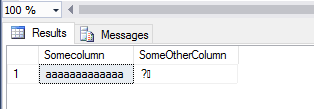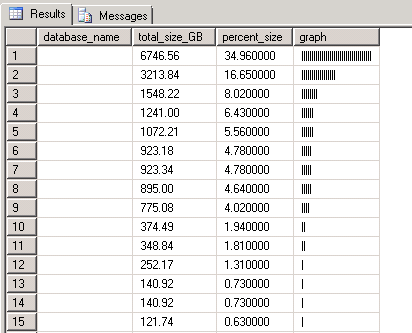
SQL Server has offered data compression for a while now, you could either use PAGE compression or ROW compression, you had no ability so specify which columns. That changed in SQL Server 2016
SQL Server 2016 added the ability to compress data yourself by using the COMPRESS function. The COMPRESS function compresses the input expression using the GZIP algorithm. The result of the compression is byte array of type varbinary(max).
Let's take a quick look at how this function works
We will create a table, insert one row and then update the SomeOtherColumn value by using the COMPRESS function on the SomeColumn column
CREATE TABLE test (Somecolumn varchar(200), SomeOtherColumn varbinary(max)) go
INSERT test VALUES ('aaaaaaaaaaaaa', null)
UPDATE test SET SomeOtherColumn = COMPRESS(Somecolumn) go SELECT Somecolumn,SomeOtherColumn FROM test
Here is what the output looks like
What if if told you now to create a new table by uncompressing the data via a SELECT INTO query followed by dropping the old table
No problem, if there is a COMPRESS function then surely there must be an UNCOMPRESS function... right? Let's find out......
SELECT Somecolumn,CAST( UNCOMPRESS(SomeOtherColumn) AS varchar(max)) AS SomeOtherColumn INTO SomeNewTable FROM test DROP TABLE test
SELECT * FROM SomeNewTable
Wrong, while the UNCOMPRESS function exists, it is not the correct function
Hopefully you ran a test before just dropping a table after doing select into
The correct function is DECOMPRESS
Here is what it all looks like
This is the outputSELECT Somecolumn,SomeOtherColumn, CAST( DECOMPRESS(SomeOtherColumn) AS varchar(max)) AS CastedDecompressed, DECOMPRESS(SomeOtherColumn) as Decompressed FROM test SELECT Somecolumn,SomeOtherColumn, CAST( UNCOMPRESS(SomeOtherColumn) AS varchar(max)) AS CastedUncompressed, UNCOMPRESS(SomeOtherColumn) as Uncompressed FROM test




